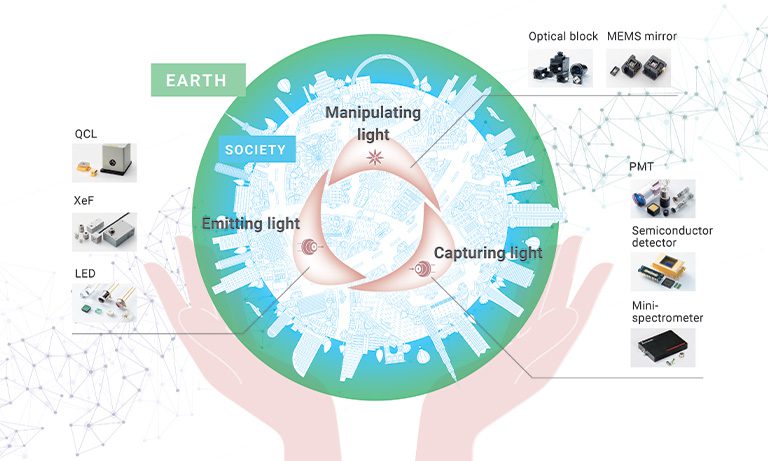
This article contains paid for content produced in collaboration with Hamamatsu.
In a world grappling with unprecedented environmental challenges, cutting-edge technology is reshaping the way we understand and safeguard our planet. With applications ranging from drone surveys to in-situ soil and water analysis, photonics is enabling more sustainable practices and transforming the way we monitor and protect our environment.
Photonics in Environmental Monitoring
Photonics is utilized in environmental monitoring in various ways. The field of Photonics harnesses the power of light to enhance environmental science, paving the way for diverse applications that transcend traditional boundaries and offer precision, insight, and transformative solutions. Hamamatsu Photonics offers the most extensive range of high-quality, and high-performing detectors and light sources that can be integrated into portable equipment for environmental monitoring applications.
Drone Surveying
Photonics plays a pivotal role in drone surveying, where InGaAs image sensors and modules are key enabling technology. These sensors enable drones to capture high-quality images, facilitating detailed observations of our environment from the skies. This technology is invaluable for monitoring landscapes, biodiversity, and changes in terrain over time.
Onsite Soil Measurement
In the realm of onsite soil measurement, photonics technologies such as NIR spectrometers and Back Thinned-CCD (BT-CCD) image sensors for LIBS (Laser-Induced Breakdown Spectroscopy) are indispensable. These devices empower scientists and researchers to perform rapid, accurate soil analysis directly in the field. Whether for agricultural assessments or environmental impact studies, photonics tools enhance our ability to understand soil composition and its implications.
Onsite Water Analysis
Water quality is a critical concern worldwide. Hamamatsu’s Xenon flash lamps, silicon photodiodes, image sensors, and UV mini spectrometers are key components for analyzing the chemical composition of water sources efficiently and reliably. These can be integrated into portable devices used in water quality inspection to support efforts to combat water pollution, ensuring that our most precious resource remains safe for consumption and sustains the ecosystems that depend on it.
Gas Analysis
Photonics is also indispensable in gas analysis. Hamamatsu Photonics offers high-power mid-infrared LEDs and high-sensitivity InAsSb detectors for precise gas detection and emissions measurement. Applications range from analyzing factory emissions to monitoring automobile exhaust emissions. Additionally, photonics technology can be used in breath analysis for early disease detection, making it a valuable addition to analyzing equipment used in the healthcare sector.
Algae Analysis
Photonics-based light sources and detector modules are key components for portable instruments used in assessing water pollution and understanding the relationship between different substances and their toxicity. This is especially important in studying the impact of algae and other contaminants on aquatic ecosystems, helping us develop strategies to mitigate their effects.
Plastic Recycling
For accurate identification of mixed materials in the realm of plastic recycling, photonic technology, such as dual energy X-ray line scan cameras, InGaAs area and linear image sensors, and FT-NIR spectrometers, are invaluable. These technologies help us develop more efficient recycling processes, reducing the environmental impact of plastic waste.
Photonics is at the forefront of revolutionizing environmental monitoring. From tracking water quality to measuring greenhouse gas emissions and advancing solar energy technology, photonics technology offers a level of precision and insight that were previously unattainable. Its ability to measure even the faintest trace of light empowers scientists and environmentalists to make informed decisions based on precise measurements, paving the way for a more sustainable and eco-friendly future.
As we face ever-increasing environmental challenges, photonics stands as a shining example of how science and technology can come together to protect our planet. With a growing commitment to leveraging photonic technology, we can achieve better environmental stewardship and ensure a healthier future for all.







